During the past decade, the average number of acres burned by wildfires each year in California has nearly doubled, according to the Department of Forestry and Fire Protection. But has California always experienced such widespread, destructive fires? The short answer: no.
California is home to 59 habitat types, many of which not only withstand fire—but actually rely on it to thrive. Take the giant sequoia, for instance: its serotinous cones require the heat of fire to release seeds. Naturally occurring fire is vital in supporting biodiversity, enriching soil and creating space for native plants to grow. Indigenous communities have long recognized this, using fire as a powerful tool for ecosystem stewardship.
Yet, despite its natural benefits, fire has become increasingly destructive. A combination of factors — including decades of fire suppression, climate change and growing development in fire-prone areas — has fueled more frequent and intense wildfires across the state.
To help manage and mitigate the effects of unplanned fires, California State Parks launched the Wildfire and Forest Resilience program in 2021 to provide guidance and funding for wildfire resilience work statewide. The program expands and improves upon decades of land management practices and weaves in traditional ecological knowledge to develop more effective strategies for stewarding resilient ecosystems and wildfire prevention statewide.
Four incredible women working in the program shared their insights into fire’s role in California’s state parks. Lisa Andreano and Brooke Sheridan, senior environmental scientists, and Azalie Welsh, forester, participated in leadership training programs as part of State Parks’ partnership with Parks California and joined us for a live chat. We also spoke with Sarah Gibson, who has possibly the coolest job title — statewide burn boss.
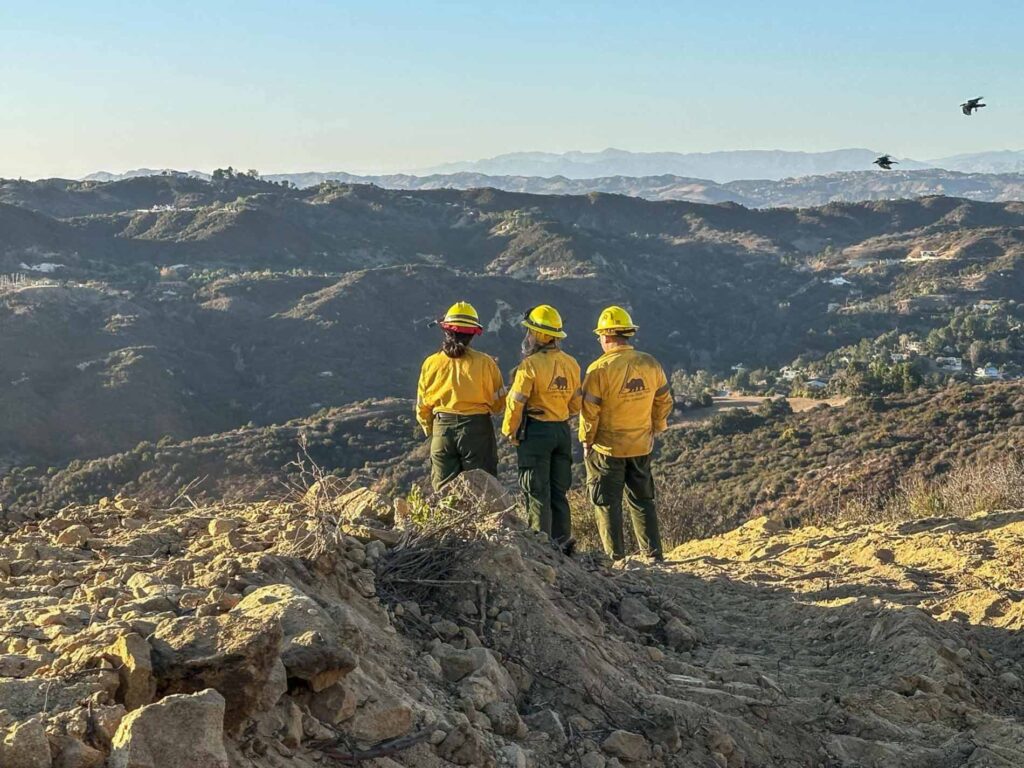
Photo: Jeff Findlay
Paths to the Flames
Everyone finds their way to working with fire differently. Brooke was already working at California State Parks when she discovered its fire management program. With support from her district, she attended a basic fire academy in 2015, and just two weeks after graduating, she was out on her first wildfire sporting fresh yellow Nomex gear.
As a Cal Poly undergrad, Lisa took a field botany class and vividly recalls a hike at Montaña de Oro State Park, where she learned that bishop pines need fire to regenerate and there were no fires on record. Years later, she helped launch the prescribed fire management program in State Parks’ San Luis Obispo Coast District, and they were able to carry out a burn.
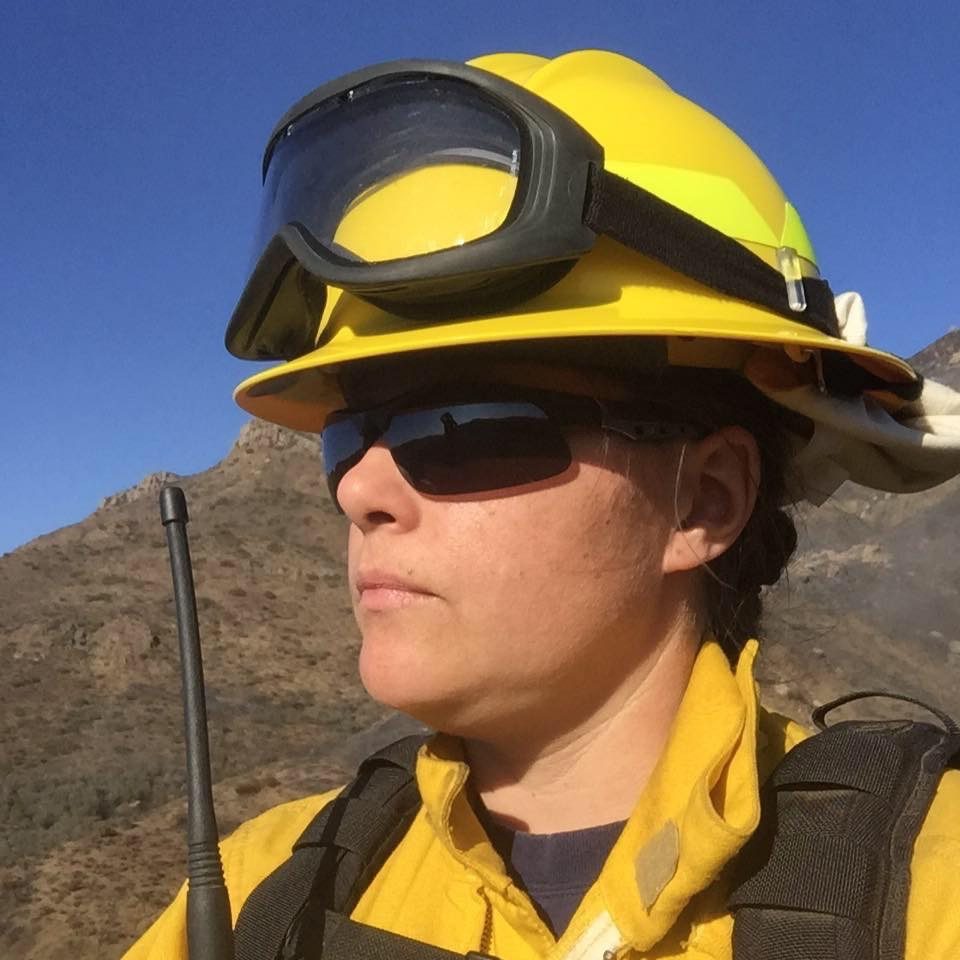
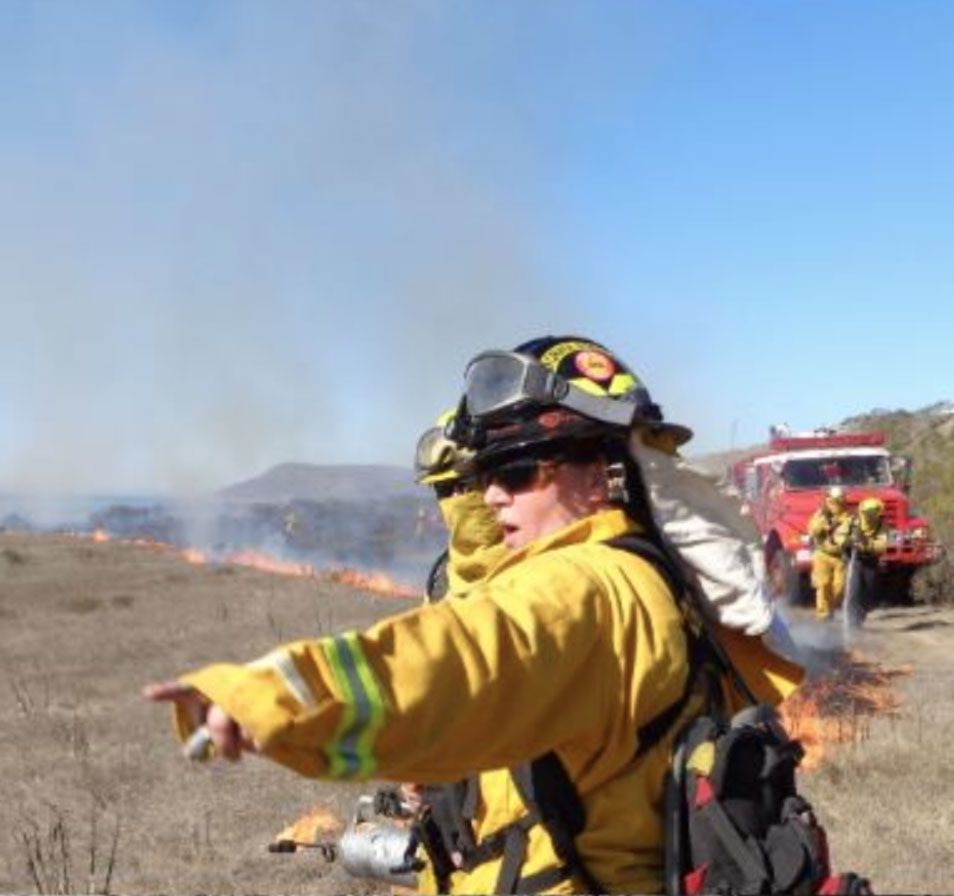
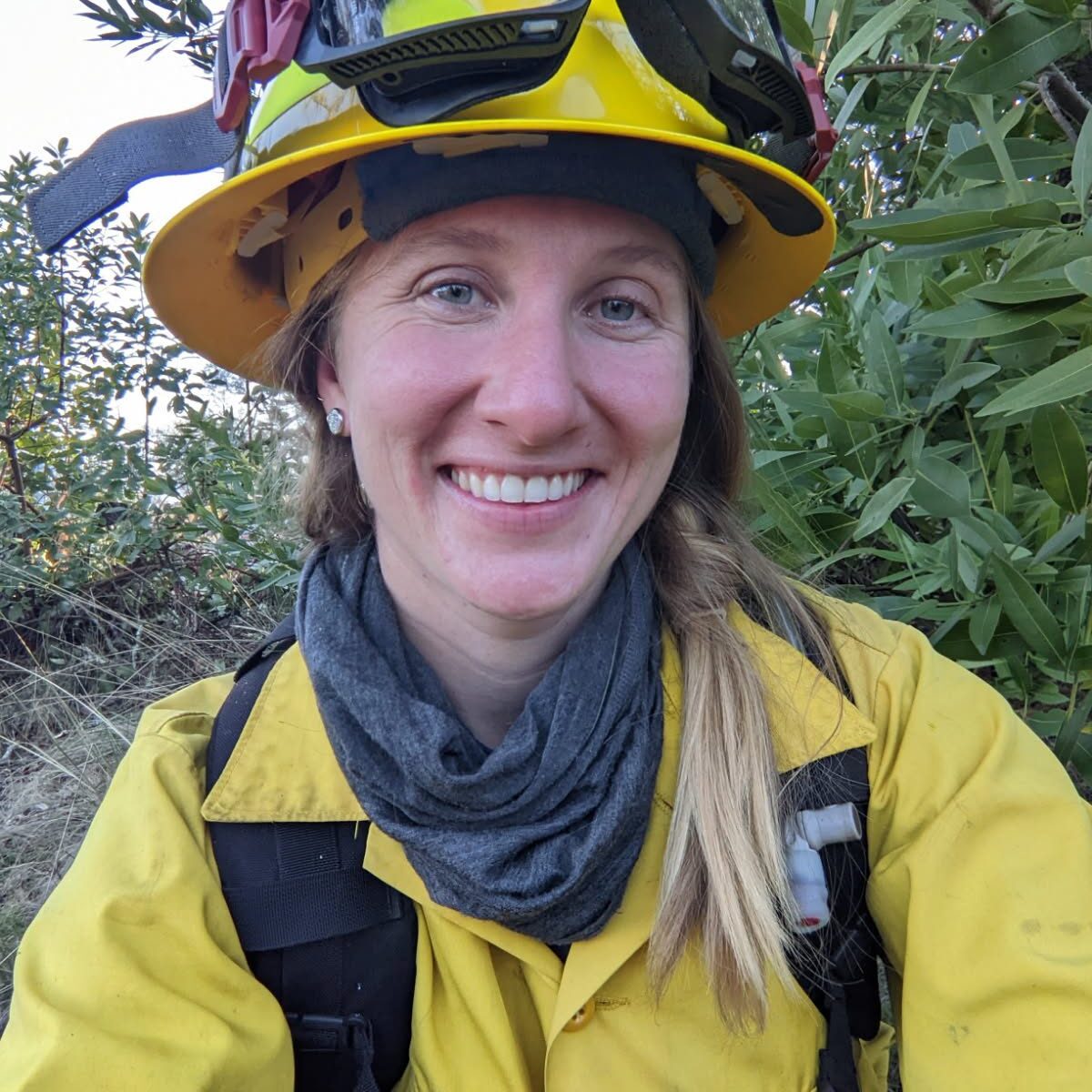
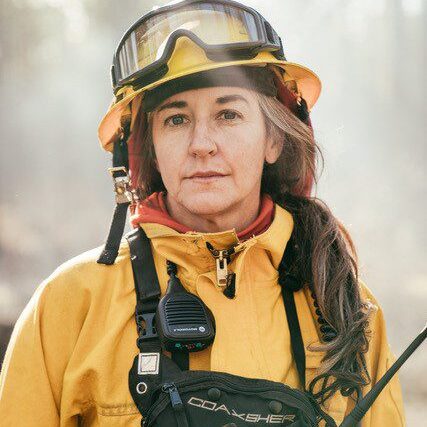
Azalie also caught the fire bug as an undergrad. At UC Berkeley, she was given the chance to participate in prescribed burns through a fire ecology course. During their first burn, Azalie felt how good it was to give the land what it needed. Since then, working with fire has been the priority.
As a child, Sarah recalls being in awe of the silhouette of a wildland firefighter while driving through Yosemite. A pivotal moment came years later when she responded to a wildfire in Oroville as a paramedic, helping evacuate bedridden residents. That experience sparked her fascination with fire behavior. She later became a volunteer firefighter and, since 2002, has worked full-time in fire suppression with state and local government agencies.

Photo: Brian Fischer, California Polytechnic State University
LA Firestorms
The leadership skills learned in their training became essential this year when the Palisades Fire broke out. Lisa and Brooke were already in the Santa Monica Mountains teaching a fire safety and skills class. Azalie and Sarah flew down from Northern California to join the team responding to the LA firestorms.
Assigned as lead resource advisors the day the fire started, Lisa and Brooke managed 40 people, focused on minimizing the impact on archaeological sites, rare plants, endangered species, tribal assets and the land. Joined by Sarah and Azalie, they collaborated with fire suppression teams, National Parks staff, the Chumash Fire Department and multiple tribes to not only avoid and minimize wildfire threats and fire suppression impacts but also integrate cultural and ecological values into planning, repair and recovery.
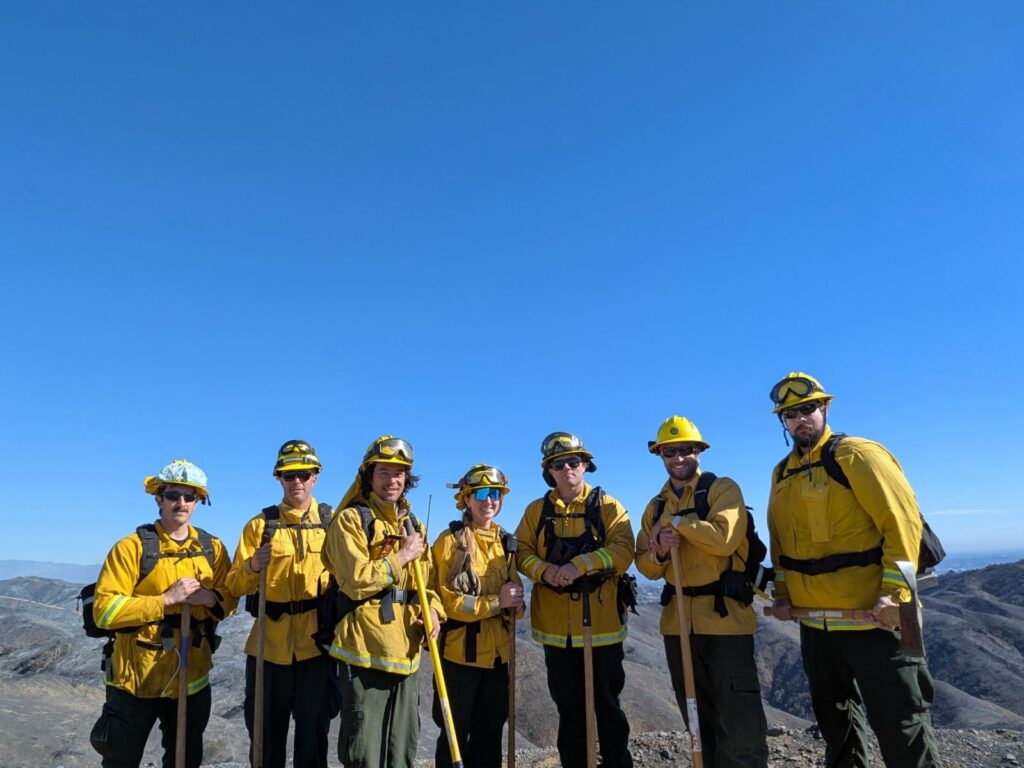
Photo: David West
Despite having worked many wildfires in California, Lisa was still shocked by the speed and intensity of this fire and the devastation to the local communities. On the first night, her team of seven was prepping to apply protective gel to a historic state park structure. The fire moved faster than expected, and they had to evacuate the park within 15 minutes of arrival.
Azalie shared that one of the biggest challenges of working in wildfire is being away from loved ones and witnessing damage not only to homes but also to culturally significant sites in state parks, like Will Rogers’ house. They grew up in West LA and spent many weekends hiking and exploring those parks with family. While difficult, Azalie was honored to help. They noted the challenge of shifting from the collaborative leadership style used in their daily work to the more hierarchical structure of the fire line. However, Azalie found the Parks California Rising Leaders course helpful in preparing for that transition, “I had been practicing those skills that I needed to [be able to] just jump into immediately as soon as I got deployed.”
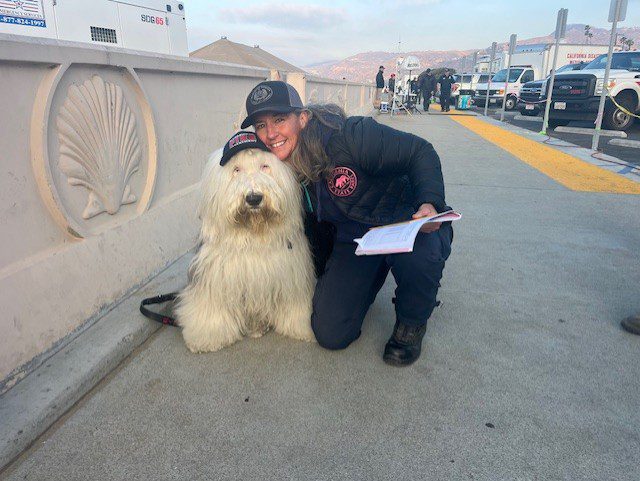
Brooke shared that her leadership training encouraged collaboration inspired by nature, a concept introduced during training as the mycelium map. Plants and fungi often share resources and communicate with each other through mycorrhizal fungi, creating a symbiotic relationship between fungi and plant roots. This ecological metaphor helped her approach teamwork more thoughtfully, emphasizing active listening and adaptability, especially during high-stress situations where it can be challenging to respond with composure versus reacting impulsively.
Hope for the Future
Entire hillsides in Topanga were reduced to moonscapes in only a few hours with only roots holding the blackened soil in place. But just days after the Palisades Fire, green yucca resprouts were already visible. The regrowth of these fire-adapted landscapes gives fire experts like Brooke hope. Witnessing this natural regeneration, even while still working a fire, reminds her of the strength and adaptability of these ecosystems.
One of the most rewarding parts of Sarah’s role is tribal engagement. Her work includes partnering with tribes that want to explore cultural burning. These planned fires are unique to each community and can have different uses, whether ceremonial, habitat-driven or passed down through generations. The role of fire in tribal life runs deep. Sarah has helped host trainings with eight different tribes, aligning with the state’s co-stewardship priorities. Sarah said that Parks California has been a huge help in bringing all parties to the table, “as soon as I joined state parks, Parks California asked how their nonprofit could support tribal engagement.” Parks California offered stipends and scholarships, which created time and space to collaborate on multiple types of fire knowledge.
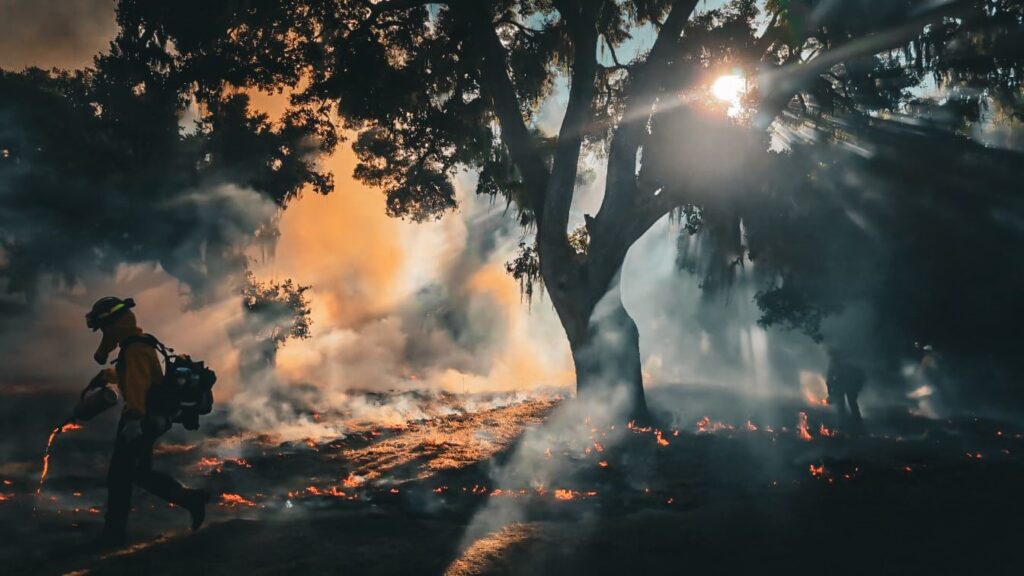
Photo: Brian Fischer, California Polytechnic State University
Tips for Visiting Parks
When visiting recently burned areas, the fire team has some consistent advice. Respect all closure signs and fencing, as these protect both public safety and the land’s recovery. Stay on designated trails and avoid walking into burned zones, as doing so can spread invasive species that cling onto your shoes and outcompete native plants.
To help prevent wildfires, be mindful of anything that could cause a spark. Properly extinguish campfires and cigarettes and never park your vehicle on dry grass. If you see smoke and are not sure whether it is from a prescribed burn, look for signs, staff or check resources like the California Smoke Spotter app or the Prescribed Fire Information Reporting System. When in doubt, Azalie says to report smoke to park staff or call 911 to ensure safety.
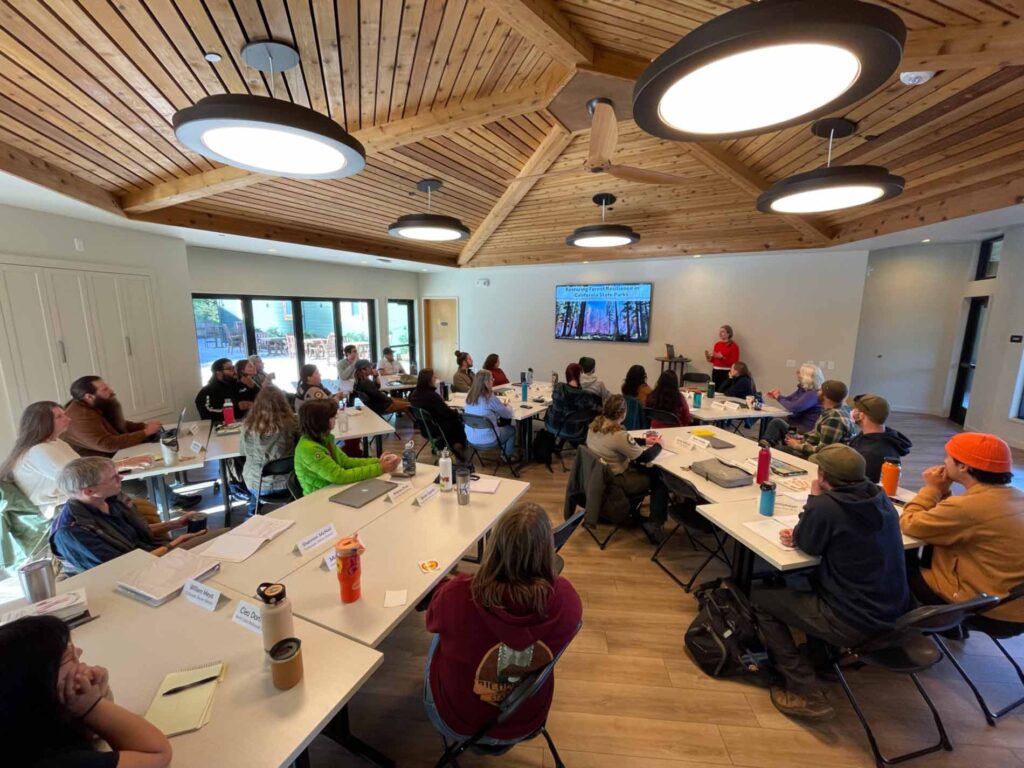
Photo: Erika Delamarre
Parks California, through our partnership, provides trainings and tools that support our state park partners, like leadership training to help respond to catastrophic wildfires. While landscapes and visitor experiences may change, our 280 state parks are here for you to enjoy and help preserve California’s unique public lands. Learn about Parks California’s Renew LA efforts.
